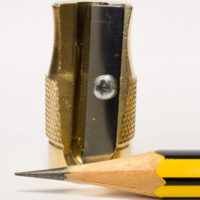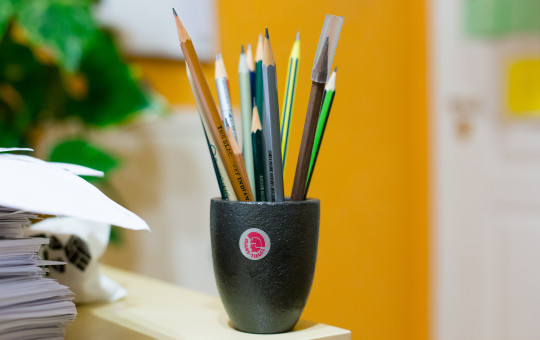Description: A pencil pot made from graphite
Price: €11.90 (in 2011) (~$12.70; £8.40)
Material: Graphite [1]Plus silicon carbide, aluminium oxide and silicon dioxide (according to Lexikaliker).
Further information: Lexikaliker bought this “Mars Tiegel” from the museum of the Graphit Kropfmühl PLC, now part of AMG Mining PLC. Now it’s mine and ever since I got it it is my most treasured pencil pot, storing my ready to be used pencils [2]You can see this pencil pot in the background of the previous pencil pot of the month.. It is made by Aug. Gundlach, who describe their company as one of the world’s leading manufacturers of crucibles [3]According to Wikipedia a crucible can withstand very high temperatures and is used for metal, glass, and pigment production as well as a number of modern laboratory processes.. Apparently clay-graphite crucibles, like this one, are a thing, which means that a clay graphite [4]Graphite has actually been used for thousands of years, i.e. before the famous deposit in Cumbria was discovered in the 16th century. mix is also used for manufacturing items other than pencils.
Price: 2011
Exchange rate: November 2015
Lexikaliker wrote about this black gold crucible in 2011. (Bing translation, Google translation)
There is also a great looking Graphit Kropfmühl pencil, previously shown in this blog post.
References
| ↑1 | Plus silicon carbide, aluminium oxide and silicon dioxide (according to Lexikaliker). |
|---|---|
| ↑2 | You can see this pencil pot in the background of the previous pencil pot of the month. |
| ↑3 | According to Wikipedia a crucible can withstand very high temperatures and is used for metal, glass, and pigment production as well as a number of modern laboratory processes. |
| ↑4 | Graphite has actually been used for thousands of years, i.e. before the famous deposit in Cumbria was discovered in the 16th century. |

